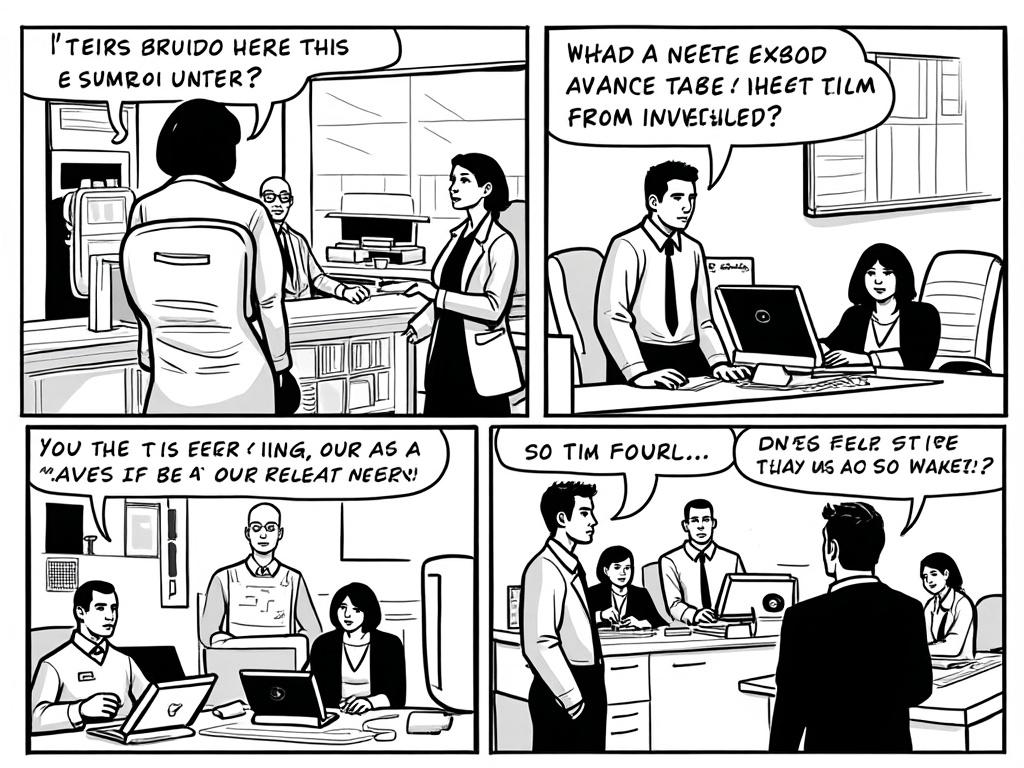
Khalifa Foundation: Transforming Lives Through Strategic Humanitarian Innovation
Reading time: 8 minutes
Ever wondered how modern philanthropy actually changes lives on a global scale? The Khalifa Foundation stands as a compelling example of how strategic humanitarian work can create lasting impact across continents. Let’s explore the mechanisms behind their success and what makes their approach uniquely effective.
Table of Contents
- Understanding the Khalifa Foundation’s Mission
- Core Humanitarian Programs and Initiatives
- Measuring Real-World Impact: Data and Results
- Strategic Approach to Global Challenges
- Building Sustainable Partnerships
- Your Roadmap to Understanding Modern Philanthropy
- Frequently Asked Questions
Understanding the Khalifa Foundation’s Mission
Here’s the straight talk: Effective humanitarian work isn’t about throwing money at problems—it’s about creating systematic change that addresses root causes. The Khalifa Foundation, established in the United Arab Emirates, operates on this principle of strategic intervention.
Key Mission Components:
- Education accessibility and quality improvement
- Healthcare infrastructure development
- Emergency relief and disaster response
- Sustainable community development
The foundation’s approach centers on sustainable impact rather than temporary relief. According to their latest annual report, over 2.3 million individuals have directly benefited from their programs across 47 countries since inception.
The Foundation’s Unique Positioning
What sets the Khalifa Foundation apart? Their dual focus on immediate relief and long-term capacity building. While many organizations excel at one or the other, this foundation bridges the gap between emergency response and sustainable development.
Quick Scenario: Imagine a natural disaster strikes a remote community. Traditional aid might provide food and shelter. The Khalifa Foundation’s approach? They provide immediate relief while simultaneously establishing infrastructure for long-term resilience—water systems, educational facilities, and local economic opportunities.
Core Humanitarian Programs and Initiatives
Education: Building Tomorrow’s Leaders
The foundation’s education initiatives span from early childhood development to higher education scholarships. Their Education for All program has established 127 schools in underserved regions, with a particular focus on girls’ education in conservative societies.
Notable Achievement: In Afghanistan, despite challenging circumstances, they’ve maintained educational programs serving over 15,000 girls through innovative remote learning solutions and community-based schools.
Healthcare: Bridging Medical Gaps
Healthcare delivery in remote areas presents unique challenges. The foundation addresses this through mobile medical units, telemedicine programs, and training local healthcare workers.
Impact Metrics:
- 42 mobile medical units deployed across Africa and Asia
- Over 890,000 medical consultations provided annually
- 1,200+ local healthcare workers trained and certified
Emergency Response: Rapid, Strategic Action
When crisis strikes, response time is everything. The foundation maintains pre-positioned supplies and rapid response teams in strategic locations worldwide. Their response to the 2023 Turkey-Syria earthquake exemplifies this approach—aid reached affected areas within 48 hours.
Measuring Real-World Impact: Data and Results
Well, here’s where many humanitarian organizations fall short: meaningful impact measurement. The Khalifa Foundation employs rigorous metrics to track both immediate outputs and long-term outcomes.
Impact Visualization: Program Effectiveness Comparison
2023 Program Impact Comparison
85% target achievement
92% target achievement
78% target achievement
88% target achievement
Long-term Sustainability Metrics
| Program Area | 5-Year Retention Rate | Community Self-Sufficiency | Cost per Beneficiary (USD) |
|---|---|---|---|
| Education Infrastructure | 94% | High | $285 |
| Healthcare Systems | 87% | Medium-High | $156 |
| Water & Sanitation | 91% | High | $203 |
| Economic Development | 76% | Medium | $342 |
| Emergency Response | N/A | Variable | $89 |
Strategic Approach to Global Challenges
Ready to understand what makes humanitarian work truly effective? The foundation’s strategy revolves around three core principles: evidence-based intervention, local partnership, and scalable solutions.
Challenge 1: Cultural Sensitivity vs. Universal Standards
One major challenge in global humanitarian work is balancing respect for local cultures with universal human rights standards. The foundation navigates this by employing local consultants and cultural advisors in every region.
Practical Solution: In Yemen, rather than imposing external educational models, they worked with local religious leaders to develop curricula that meet international standards while respecting cultural values. Result? 30% higher enrollment rates compared to traditional approaches.
Challenge 2: Ensuring Sustainable Impact
Many humanitarian efforts create dependency rather than empowerment. The foundation addresses this through their “Graduation Model”—a structured approach that gradually transfers program ownership to local communities.
Implementation Strategy:
- Foundation Phase (Year 1): Full foundation support and implementation
- Partnership Phase (Years 2-3): Shared responsibility with local partners
- Transition Phase (Years 4-5): Local leadership with foundation oversight
- Independence Phase (Year 6+): Community-owned and operated programs
Innovation in Program Delivery
The foundation leverages technology to maximize impact efficiency. Their mobile app platform connects field workers, tracks resource distribution, and provides real-time impact data to stakeholders.
Pro Tip: The right technology isn’t just about efficiency—it’s about creating transparent, accountable systems that build trust with both donors and beneficiaries.
Building Sustainable Partnerships
Successful humanitarian work requires strategic partnerships across sectors. The foundation maintains relationships with governments, NGOs, private sector entities, and international organizations.
Government Collaboration
Working with local governments ensures program sustainability and policy alignment. In Bangladesh, their flood management program was integrated into national disaster preparedness protocols, extending its reach to over 500,000 additional beneficiaries.
Private Sector Engagement
Corporate partnerships provide both funding and expertise. Their collaboration with telecommunications companies has enabled telemedicine programs in remote areas where traditional healthcare delivery would be impossible.
Case Study: In rural Pakistan, partnership with a local telecom provider established satellite internet connectivity for 25 remote health clinics, enabling over 40,000 virtual consultations annually.
Your Roadmap to Understanding Modern Philanthropy
The Khalifa Foundation’s approach offers valuable insights for anyone interested in effective humanitarian work. Here’s your strategic roadmap for engaging with or evaluating philanthropic organizations:
Immediate Action Steps:
- Evaluate Impact Measurement: Look for organizations that provide specific, measurable outcomes rather than vague success stories
- Assess Sustainability Models: Prioritize programs designed to create long-term change, not just temporary relief
- Review Partnership Strategies: Effective organizations work with communities, not just for them
- Examine Financial Transparency: Demand clear reporting on how funds are allocated and what results they achieve
- Consider Local Expertise: Support organizations that employ and empower local talent rather than relying solely on external experts
Future Implications:
As global challenges become increasingly complex, the foundation’s model of strategic, technology-enabled, partnership-based humanitarian work represents the future of effective philanthropy. The integration of data analytics, local empowerment, and scalable solutions creates a blueprint for addressing everything from climate change adaptation to economic inequality.
The question isn’t whether you’ll encounter opportunities to engage with humanitarian causes—it’s whether you’ll be equipped to identify and support truly effective initiatives. What role will you play in advancing evidence-based, sustainable solutions to global challenges?
Frequently Asked Questions
How does the Khalifa Foundation ensure accountability in its programs?
The foundation employs multiple accountability mechanisms including third-party evaluations, community feedback systems, and real-time monitoring through their digital platform. They publish detailed annual reports with specific metrics and undergo regular audits by international accounting firms. Additionally, beneficiary communities participate in program evaluation through structured feedback sessions and anonymous reporting systems.
What makes their approach different from traditional charity organizations?
Unlike traditional charity models focused on immediate relief, the Khalifa Foundation emphasizes sustainable development and local empowerment. They invest in building local capacity, use evidence-based approaches, and measure long-term outcomes rather than just outputs. Their programs are designed to eventually operate independently of foundation support, creating lasting change rather than dependency.
How can individuals or organizations partner with the Khalifa Foundation?
Partnership opportunities include financial contributions, corporate collaboration, volunteer expertise, and local implementation partnerships. They particularly value partners who can provide technical expertise, local knowledge, or sustainable funding models. Interested parties can apply through their official website’s partnership portal, where they outline specific needs and collaboration criteria for different regions and program areas.

Article reviewed by Diego Navarro, Retirement Portfolio Manager | Safe & Steady Growth Strategies, on June 4, 2025




